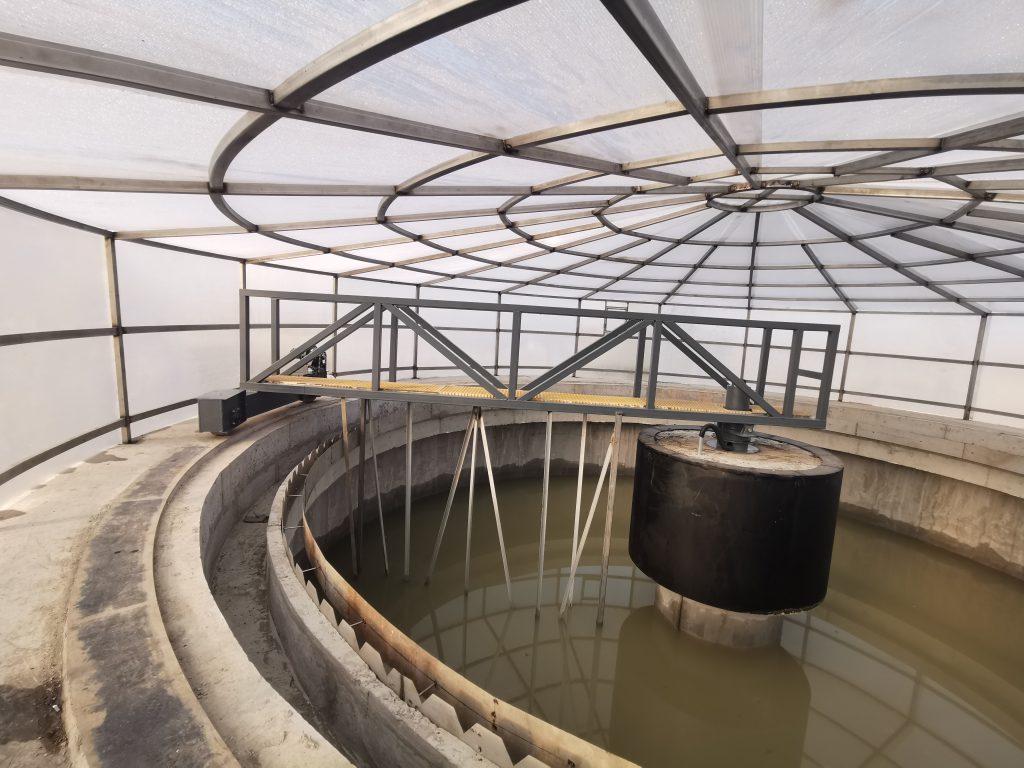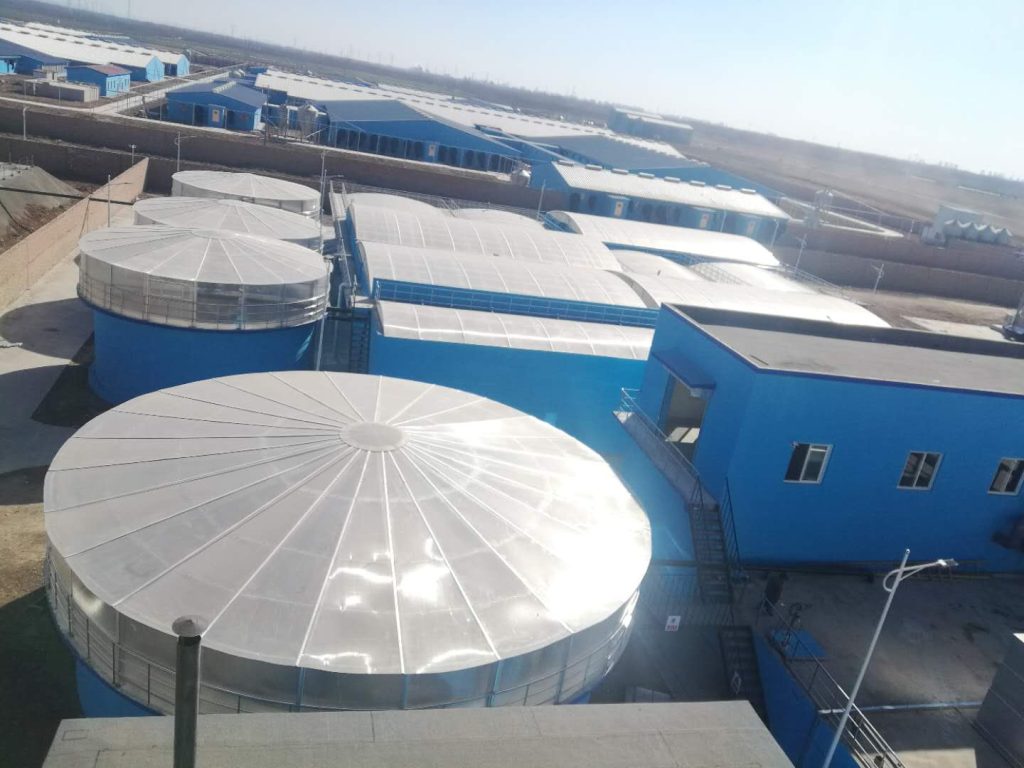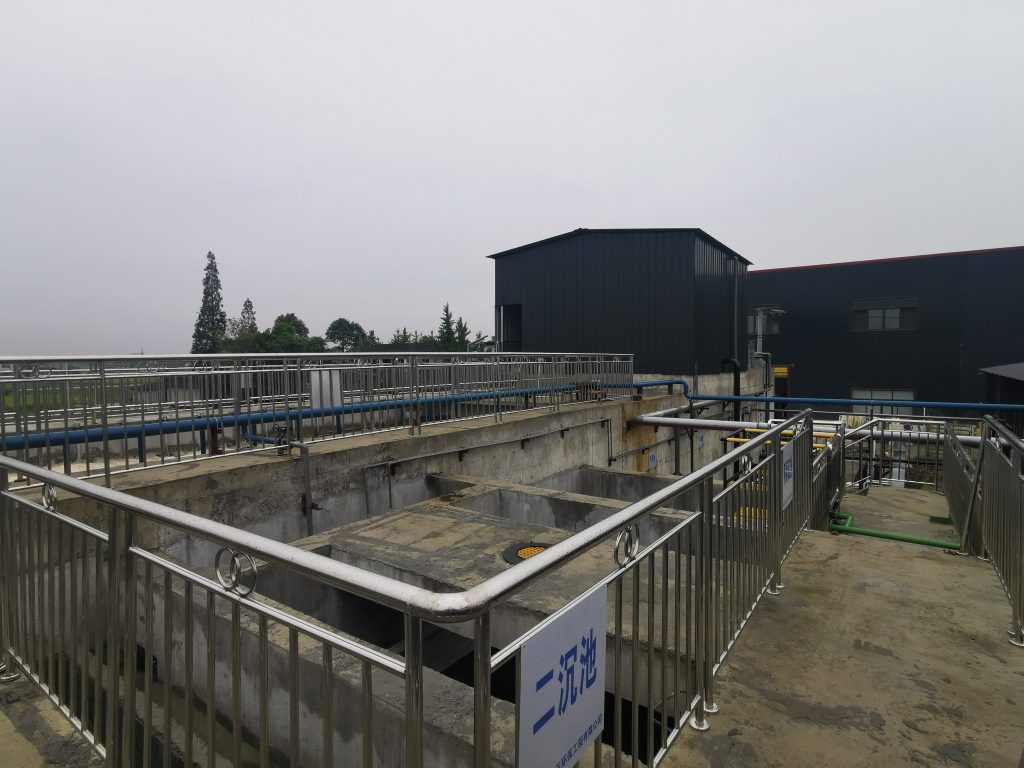The impact of chloride ions on bacteria in sewage treatment and corresponding countermeasures.
The main toxic effect of high concentrations of chloride ions on biological wastewater treatment is through the increased environmental osmotic pressure, which damages the cell membrane and enzymes inside microbial cells, thereby disrupting the physiological activities of microorganisms.
Microorganisms grow well under isotonic conditions, such as in a NaCl solution with a mass concentration of 5-8.5g/L. Under hypotonic conditions (p(NaCl)=0.1g/L), water molecules in the solution infiltrate the microbial cells, causing the cells to swell and, in severe cases, burst, resulting in the death of the microorganisms. Under hypertonic conditions (p(NaCl)=200g/L), water molecules in the microbial cells migrate to the outside of the cells (i.e., dehydration), causing the cells to undergo plasmolysis.
The unit structure of microorganisms is the cell, and the cell wall acts as a semi-permeable membrane. When the chloride ion concentration is less than or equal to 2000mg/L, the cell wall can withstand an osmotic pressure of 0.5-1.0 atmospheres. Even with the toughness and elasticity of the cell wall and cytoplasmic membrane, the osmotic pressure that the cell wall can withstand will not exceed 5-6 atmospheres.
However, when the chloride ion concentration in the water solution exceeds 5000mg/L, the osmotic pressure will increase to approximately 10-30 atmospheres. Under such high osmotic pressure, water molecules in the microbial cells will diffuse massively into the external solution, causing cell dehydration and plasmolysis. Severe cases can result in microbial death. Engineering experience data shows that when the chloride ion concentration in wastewater exceeds 2000mg/L, microbial activity will be inhibited, and the COD removal rate will significantly decrease. When the chloride ion concentration in wastewater exceeds 8000mg/L, the sludge volume will expand, and a large amount of foam will appear on the water surface, resulting in the successive death of microorganisms.

Performance of inhibiting activated sludge
When the chloride ion concentration in the biological system changes significantly, the carbonization and nitrification performance of the sludge will quickly weaken or even disappear, leading to a significant decrease in COD removal rate and accumulation of nitrite in the nitrification process. Even if the dissolved oxygen in the sewage is increased, the effect is not obvious. In other words, activated sludge has a certain tolerance to chloride ion concentration. When the chloride ion concentration exceeds a certain value, the system’s degradation ability decreases, until the system loses its treatment ability.
The sudden change of chloride ions has a greater impact on the system than the gradual change of chloride ions. As the chloride ion concentration increases, the rate of organic matter degradation decreases. Therefore, a low F/M ratio (the ratio of nutrients to activated sludge in mass) is more suitable for the treatment of wastewater containing chloride ions.
Chloride ions change the composition of microorganisms in sludge, change the sedimentation and effluent SS of sludge, cause serious sludge loss, decrease the concentration of activated sludge, and increase the sludge index. The 30-minute settling rate decreases.
From the results of the microscopic examination of activated sludge, it is shown that when the salt content is low, the biological components are relatively abundant, and the filamentous bacteria, floc, and protozoa are diverse. The particles of activated sludge are large, the floc is closed, and the floc has a certain compactness. As the chloride ion concentration in the incoming water increases, when the sudden mutation of chloride ions increases from the original 150 mg/L to 1000 mg/L, filamentous bacteria and protozoa are basically absent, and the floc becomes denser. At this time, the floc becomes smaller and abnormally compact. The degradation of organic matter in sewage mainly depends on the collective action of a large number of microorganisms in the sewage. The increase of chloride ions causes a decrease in the number of microorganisms in the activated sludge, thereby reducing the rate of organic matter degradation.

At what level does the concentration of chloride ions in a wastewater bioreactor system begin to affect microorganisms?
(1) As salinity increases, the growth of activated sludge is affected. The changes in its growth curve are manifested as follows: the adaptation period is prolonged; the growth rate during the logarithmic growth phase slows down; and the duration of the deceleration growth phase is prolonged.
(2) Salinity enhances microbial respiration and cell lysis.
(3) Salinity reduces the biodegradability and degradability of organic matter, resulting in a decrease in the removal rate and degradation rate of organic matter. Although extending the aeration time can improve the removal efficiency of organic matter, exceeding a certain time, the increase in the removal rate of organic matter with the increase in aeration time slows down. From an economic perspective, it is not feasible to use the method of extending the aeration time to improve the removal rate of high-salt organic matter.
(4) Inorganic salts enhance the settling performance of activated sludge. As salinity increases, the sludge index decreases.
(5) The domestication of activated sludge is a necessary means for the treatment system to achieve success in treating high-salt wastewater. The domestication process of activated sludge is the process of gradually adapting the metabolic mode of microorganisms to high-salt environments and promoting the proliferation of salt-tolerant bacteria.

How to eliminate the influence of chloride ions?
1. Domestication of activated sludge
By gradually increasing the chloride ion content in the biochemical influent, microorganisms will balance the osmotic pressure inside the cell or protect the protoplasm inside the cell through their own osmotic pressure regulation mechanism. These regulatory mechanisms include aggregating low-molecular-weight substances to form a new extracellular protective layer, regulating their own metabolic pathways, changing their genetic composition, and so on.
Therefore, normal activated sludge can treat high chloride ion wastewater within a certain range of chloride ion degrees through domestication for a certain period of time. Although domesticated activated sludge can increase the system’s tolerance to chloride ions and improve the treatment efficiency of the system, the tolerance range of microorganisms in domesticated activated sludge to chloride ions is limited, and they are sensitive to environmental changes. When the chloride ion environment suddenly changes, the adaptability of microorganisms will immediately disappear. Domestication is only a temporary physiological adjustment of microorganisms to adapt to the environment and does not have genetic characteristics. This sensitivity of adaptability is very disadvantageous for sewage treatment.
The domestication time of activated sludge is generally 7-10 days. Domestication can increase the tolerance of sludge microorganisms to salt concentration. The decrease in initial activated sludge concentration during domestication is due to the toxicity of salt solution to microorganisms, which causes some microorganisms to die and results in negative growth. In the later stage of domestication, microorganisms adapted to the environment begin to multiply, so the concentration of activated sludge increases. Taking the removal of COD by activated sludge in 1.5% and 2.5% sodium chloride solutions as examples, the COD removal rates in the early and late stages of domestication are 60%, 80% and 40%, 60%, respectively.
2.Dilution of high chloride ion concentration wastewater
To reduce the concentration of chloride ions entering the biochemical system, the influent can be diluted to make the chloride ions lower than the toxic domain value, so that biological treatment will not be inhibited. Its advantages are simple method, easy operation and management; its disadvantages are increased treatment scale, infrastructure investment and operating costs. For the Yangli Sewage Treatment Plant, due to its large inflow and continuous operation, even if the online instrument measures a high concentration of chloride ions at a certain time, it is difficult to carry out targeted dilution. Therefore, this method is more suitable for factories and enterprises that produce high chloride ion concentration wastewater.
3.Choosing a reasonable process flow
Choose different treatment processes for different concentrations of chloride ion content, and appropriately choose anaerobic processes to reduce the tolerance range of chloride ions in the subsequent aerobic stage.
4.Increasing the DO in the biochemical system
Appropriately increase the dissolved oxygen in the biochemical system to ensure the activity of activated sludge.
5.Discharge of excess sludge
Increase the discharge of excess activated sludge to ensure that the growth of sludge is in the logarithmic growth phase, in order to improve the efficiency of pollutant removal.
6.Adding nutrients
While increasing the dissolved oxygen, the metabolism of sludge accelerates. To ensure the metabolism of sludge, the nutrients should be adequate. If necessary, a certain amount of nutrients can be added to ensure the activity of sludge.
